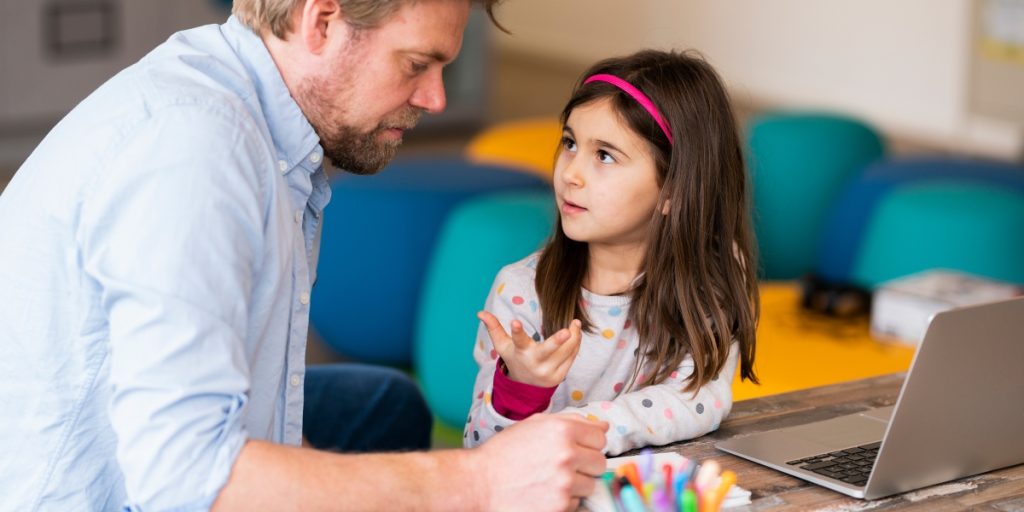
If it seems like today’s youth are struggling with anxiety and depression more than ever, that’s because they are: According to research, both have increased in kids ages 3 to 17 over the past five-plus years. And while the beginning of a school year is already fraught with garden variety worries of being away from parents, learning about a new place, fitting in, or keeping up with schoolwork, the COVID-19 pandemic has raised the stakes on back-to-school distress.
“We’ve been living in uncertainty and disruption for two and a half years now, and for a child, that’s a big piece of their memory,” says Rosanna Breaux, assistant professor of psychology and director of the Child Study Center at Virginia Tech.
“Not having regular routine or clear expectations, and not having opportunities to practice things like social interactions or taking tests is going to lead to increases in things like performance anxiety and social anxiety.”
Add to that the very real worries of either getting or potentially spreading the virus to loved ones, and you have a hearty and growing list of reasons parents should be tuned into signs of mental struggles in their children as the school year starts.
Signs of distress
Like many conditions, anxiety can show up differently in different kids, even children in the same family. Symptoms can be emotional, behavioral, and even physical. If your kid is complaining about stomachaches or headaches, or feels more tired than usual, and you can’t pinpoint an illness, anxiety is the likely culprit.
Another red flag is a continual need for reassurance with repetitive questions. “Anxious kids are often the ones having those ‘what if’ thoughts, ruminating constantly about what could happen,” says Breaux. In younger kids, this is often paired with clinginess, tears, or trouble falling or staying asleep.
Ryan Fedoroff, vice president of learning and development at Newport Academy, a teen treatment center that helps teens dealing with mental health issues, says parsing out anxiety in teens can be tricky because of the typical developmental desire to distance from parents and moodiness that can accompany those years, but there are clues you can use.
“A certain level of anxiety is just part of the teenage process, and it’s normal for parents to wonder, ‘Is this normal teenage behavior or is this clinical anxiety that needs treatment?’” she says. “But getting really frustrated with homework, having a hard time focusing, or extreme irritability beyond the typical eye rolls—those are all signs that something else is going on.”
Breaux adds that for teens anxiety can also affect grooming habits. “Someone who used to care a lot about how they look might start not to care, or at the other extreme, you may see perfectionistic tendencies about appearance,” she says.
How to help
Once you’re aware of your child’s anxiety, the next step is a simple one: Don’t dismiss it. Instead, listen and validate their emotions—without diminishing them.
“We often jump to minimize, saying things like, ‘That’s nothing’ or ‘You’ll be fine,’” says Breaux. “But it’s much better to actually acknowledge their feelings.” You can say things like, “I know this is hard. Let’s think about some ways you can get through it.” Name the worry while building confidence at the same time.
It can be tempting to “fix” your kid’s anxiety by avoiding the stressor altogether (staying home from school, for example), but Fedoroff says it’s important to resist that urge. “It’s not our job to solve the problem for them,” she says. “Our job is to walk alongside them and to give them the tools and the resources to learn how to manage it on their own.”
She encourages asking open-ended questions that engage your child in conversation, like, “How are you feeling about school?” or “What are you feeling in your body when you feel worried?” Then you can help them figure out what the triggers for these feelings are and practice ways to manage their reactions to those triggers.
Building in preventive strategies is wise, too. Simplify and streamline your morning routine so your kids are set up for success before the day begins. Arrange a conversation between your child and their teacher outside class to lay the groundwork for familiarity, or get together for a playdate with new classmates so things seem a little less foreign in their daily environment.
“Routine and predictability can really reduce stress for kids,” says Fedoroff. When kids have familiar touchpoints in their daily schedule, it gives them a chance to let down their guard for a while, and rest their anxious mind. Simple practices such as eating the same breakfast each morning, sticking to the same bedtime ritual every night, or blocking off a specific part of the day to just be with your child create consistent pockets of calm and reassurance, and lay groundwork for more robust coping skills.
Also important: Manage your own anxious tendencies so you can be a grounded guide for your child. Monitor how much you talk about your worries—or theirs—in front of your kids, and when you find yourself with a short fuse, practice self-care, so they know what it looks like.
“I always use the face mask analogy from airplanes,” says Breaux. “Put your own oxygen on before helping others. It’s okay to communicate to your kids when you’re stressed that you need to go on a walk, or go take a shower. They need to see that it’s OK to feel stressed and worried, and also that there are ways to care for yourself when that’s true.”
If you’re feeling concerned enough about your child’s school anxiety to call in a professional, do it sooner rather than later. Most counselors and therapists have full books, and it may take some weeks to get an available spot. You can always cancel your appointment later on if it seems like your child’s anxiety has waned in the meantime.

